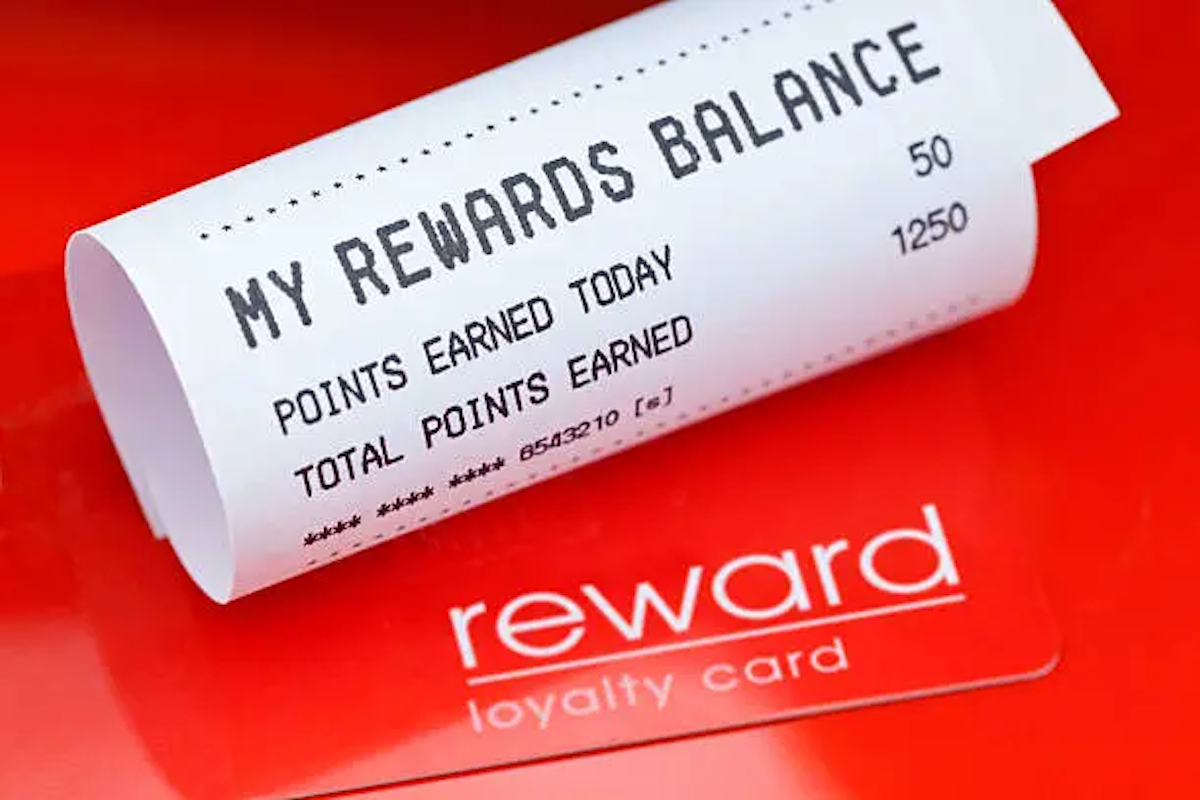32 min read
8 Loyalty Card Program Best Practices That Accelerate Revenue
Customers stick with loyalty programs because they receive meaningful rewards, useful perks, and recognition at every location they visit. A...
Platform
What is Paytronix Guest Engagement Suite?
Combining online ordering, loyalty, omnichannel messaging, AI insights, and payments in one suite. Paytronix delivers relevant, personal experiences, at scale, that help improve your entire digital marketing funnel by creating amazing frictionless experiences.
A Complete Guest Engagement Suite
Online Ordering
Acquire new customers and capture valuable data with industry leading customization features.
Loyalty
Encourage more visits and higher spend with personalized promotions based on individual activity and preferences.
Catering
Grow your revenue, streamline operations, and expand your audience with a suite of catering tools.
CRM
Build great customer relationships with relevant personal omnichannel campaigns delivered at scale.
Artificial Intelligence
Leverage the most data from the most customer transactions to power 1:1 marketing campaigns and drive revenue.
Payments
Drive brand engagement by providing fast, frictionless guest payments.
Solutions
Paytronix Guest Engagement Solutions
We use data, customer experience expertise, and technology to solve everyday restaurant and convenience store challenges.
FlightPaths are structured Paytronix software onboarding journeys designed to simplify implementation and deliver maximum ROI.
Customer Success Plans (CSPs) are tiered service offerings designed to help you get the most from your Paytronix software, whether you prefer self-guided support or hands-on partnership.
Contactless Experiences
Accommodate your guests' changing preferences by providing safe, efficient service whether dining-in or taking out.
Customer Insights
Collect guest data and analyze behaviors to develop powerful targeted campaigns that produce amazing results.
Marketing Automation
Create and test campaigns across channels and segments to drive loyalty, incremental visits, and additional revenue.
Mobile Experiences
Provide convenient access to your brand, menus and loyalty program to drive retention with a branded or custom app.
Subscriptions
Create a frictionless, fun way to reward your most loyal customers for frequent visits and purchases while normalizing revenues.
Employee Dining
Attract and retain your employees with dollar value or percentage-based incentives and tiered benefits.
Order Experience Builder
Create powerful interactive, and appealing online menus that attract and acquire new customers simply and easily.
Loyalty Programs
High-impact customizable programs that increase spend, visit, and engagement with your brand.
Online Ordering
Maximize first-party digital sales with an exceptional guest experience.
Integrations
Launch your programs with more than 450 existing integrations.
Loyalty Programs
Deliver the same care you do in person with all your digital engagements.
Online Ordering
Drive more first-party orders and make it easy for your crew.
Loyalty Programs
Digital transformations start here - get to know your guests.
Online Ordering
Add a whole new sales channel to grow your business - digital ordering is in your future.
Integrations
We work with your environment - check it out
Tobacco Reporting
Comply with AGDC 2026 DTP Requirements
Company
We are here to help clients build their businesses by delivering amazing experiences for their guests.
Meet The Team
Our exceptional customer engagement innovations are delivered by a team of extraordinary people.
News/Press
A collection of press and media about our innovations, customers, and people.
Events
A schedule of upcoming tradeshows, conferences, and events that we will participate in.
Careers
Support
Paytronix Login
Order & Delivery Login
Resources
Paytronix Resources
Learn how to create great customer experiences with our free eBooks, webinars, articles, case studies, and customer interviews.
FlexPoint Service Catalog
Access FlexPoints are a cost-effective, flexible way to access our value-added services, to ensure you get greater impact from your Access software solution.
See Our Product In Action
E-Books
Learn more about topics important to the restaurant and c-store customer experience.
Reports
See how your brand stacks up against industry benchmarks, analysis, and research.
Blog
Catch up with our team of in-house experts for quick articles to help your business.
Case Studies
Learn how brands have used the Paytronix platform to increase revenue and engage with guests.
Unlock loyalty strategies that 3 out of 4 restaurants use to boost engagement by 40% without adding staff.
7 min read
Nov 10, 2025
.jpg)
Marketing automation platforms can transform how restaurants engage with customers, streamline processes, and drive revenue growth. Yet many B2C brands, especially restaurants, c-stores, and retailers, struggle to see consistent ROI.
From loyalty promotions to email marketing automation, success depends on a clear marketing strategy, accurate tracking of key metrics, and leveraging data analysis to uncover valuable insights. Marketing automation refers to systems that rely on segmentation, targeting, and control, helping measure ROI by comparing revenue and customer lifetime value against software and campaign costs.
According to Grand View Research, the global marketing automation market was valued at $6.65 billion in 2024 and is projected to reach $15.5 billion by 2030, highlighting the rising demand for more innovative, data-driven marketing tools.
This article explores eight actionable ways to boost ROI through automation. By leveraging marketing automation with Paytronix, restaurants can personalize guest interactions, automate loyalty and email campaigns, and unlock deeper insights while maximizing efficiency and profitability.
In restaurant and retail environments, ROI extends beyond campaign performance. It reflects the combined value of increased revenue, reduced labor, and stronger customer experience.
Strategic use of marketing automation platforms enables audience segmentation, automated re-engagement messages, and optimized offers in real time. Still, many brands fail to realize the full potential due to:
Aligning automation with revenue goals and reviewing performance against key metrics helps maintain continuous optimization. Brands using advanced analytics can link marketing results to financial outcomes, making ROI measurable and improving long-term customer connections.
Improving ROI starts with selecting the right marketing automation solutions, not using every tool available. Each channel serves a purpose: email marketing campaigns drive re-engagement, SMS delivers timely promotions, loyalty workflow encourages repeat visits, and app messages enhance in-store experiences.
Syncing POS, loyalty programs, and ordering systems reveals real behaviors, like top-selling items or slow days, and informs automated campaigns and triggers: "we miss you" offers after 30 inactive days, push notifications for favorite menu items, or post-visit customer feedback requests.
Track metrics like customer lifetime value (CLV), redemption rate, engagement metrics, and visit frequency to measure campaign impact. Set benchmarks by channel, email open rates, SMS click-through rates, loyalty conversion, and refine campaigns based on real-world results.
Every marketing activity matters, from email sequences, app notifications, social media posting, and your business website. Your website is a hub for loyalty sign-ups, online ordering, and content that drives engagement.
Marketing automation users can refine timing, targeting, and messaging by analyzing which activities deliver the best results. Coordinating campaigns across channels ensures consistent, relevant communication, strengthens the customer experience, and maximizes ROI.
Data shows the value of marketing automation software. Restaurants using integrated platforms see higher engagement, faster campaign execution, and stronger ROI. Automated email campaigns often generate more revenue than one-off blasts, while loyalty automation increases visit frequency.
Implementing marketing automation strategies ensures campaigns reach the right audience with minimal wasted effort. High-performing brands apply these insights tactically: they A/B test subject lines and send times, track conversions by offer type, use predictive analytics platforms to score leads, and automate retargeting for those who haven't redeemed rewards.
These approaches allow teams to deliver personalized content and maximize the impact of automation efforts. Each optimization layer, driven by metrics and advanced analytics, translates into stronger customer preferences and retention.
Recent benchmarks show unified automation platforms can cut campaign execution time in half while improving segmentation accuracy and helping teams optimize workflows for ongoing success.
Treat every marketing automation strategy as an experiment: measure, learn, and adjust to refine campaigns and maximize ROI continuously.
Campaign optimization focuses on using real results to refine targeted campaigns. Tracking engagement, redemption, and click-through data helps restaurants and c-stores make each message more relevant and timely, demonstrating tangible marketing automation benefits.
Data-driven decision making supports lead nurturing and personalized interactions with marketing automation users and existing customers. By adjusting timing, segmenting audiences, and testing offers based on behavior, teams can improve targeting, strengthen customer relationships, and get more value from every interaction.
The next frontier is using AI for marketing for advanced personalization. AI can automatically create content tailored to individual guests, such as dynamic offers, recommendations, or loyalty reminders, enhancing engagement without additional manual effort.
Equally important is online reputation management. Monitoring reviews and feedback allows brands to respond promptly, maintain a positive image, and integrate insights into campaigns. Combining AI and reputation strategies helps restaurants and c-stores maintain a strong digital presence and strengthen customer trust.
Marketing automation delivers measurable value for restaurants, c-stores, and retail brands, improving revenue, efficiency, and customer engagement. These five key statistics highlight why marketing automation works and how to apply it in practice.
According to Nucleus Research, marketing automation returns $5.44 for every dollar spent. For restaurants, this often comes from personalized experiences or loyalty campaigns encouraging repeat visits and higher spending per guest.
Automation reduces repetitive marketing tasks by nearly 50%, freeing staff from manually sending emails, SMS, or app notifications. This allows marketing teams to focus on strategy and creative initiatives instead of routine tasks.
Brands using automation see stronger lead generation and higher conversion rates because messages reach the right audience at the right time. Personalized campaigns based on past visits, purchase patterns, or preferences consistently outperform generic promotions.
Automation streamlines campaign management across multi-channel marketing efforts, email, SMS, loyalty programs, and apps, without duplicating effort. Teams maintain consistent messaging and branding while reducing errors.
Automated campaigns keep guests engaged, but combining them with personal touches strengthens relationships. Timely, relevant messages paired with human interaction make customers feel valued.
Smart segmentation, precise targeting, and intelligent automation drive real marketing success. Delivering the right message at the right time boosts engagement, loyalty, and long-term profitability.
Sometimes strategy—not budget—limits results. Instead of adding new tools, make your current campaigns and processes work harder. Start by auditing workflows, identifying bottlenecks, and eliminating inefficiencies. Track results consistently, adjust messaging based on performance, and iterate campaigns to continuously improve outcomes.
Use insights from marketing automation users to refine targeting, timing, and personalization. Minor tweaks, like adjusting email send times, segmenting audiences more precisely, or improving follow-up sequences, can significantly boost engagement and revenue without increasing spend.
Finally, establish a regular review process to ensure campaigns stay relevant, measurable, and aligned with business goals, turning incremental improvements into measurable performance gains.
Segment smarter using POS, loyalty, and order data to personalize communication across channels. Automate re-engagement and churn-prevention messaging to maintain consistent engagement with marketing automation users.
Bundle automation across the customer journey, not just acquisition. Optimizing marketing workflows in this way drives repeat visits, improves click-through rates, and supports long-term business growth.
Calculating ROI doesn't have to be complicated. A simple formula is:
(Automation Revenue – Automation Costs) ÷ Automation Costs × 100
Include every cost tied to your automation setup: software licenses, POS or CRM software, staff hours, implementation, training, and subscription fees. These details reveal the actual investment behind each campaign.
Today's advanced analytics and AI-driven dashboards help brands measure revenue lift, customer acquisition costs, lead management efficiency, and retention performance. Metrics like engagement rates, repeat visits, and loyalty redemptions provide a fuller picture of automation impact.
Paytronix centralizes these insights by connecting POS, loyalty, and order data into one interface. Teams can analyze behavior across channels, pinpoint high-performing segments, and refine strategies with the precision that SaaS companies apply to optimize user growth. The result: data-backed decisions that consistently increase ROI.
Integrating marketing automation with loyalty, POS, restaurant CRM, and mobile ordering ensures campaigns are personalized and timely. Real-time syncing keeps customer data accurate, reflecting recent purchases and preferences.
Platforms like Toast, Lightspeed, and Square for POS systems provide sales and order data to feed into your marketing strategy. Paytronix centralizes this data across loyalty programs, mobile ordering, and payments, allowing teams to automate workflows, deliver personalized communication, and leverage insights to boost engagement and efficiency.
Imagine a mid-sized restaurant that had never used marketing ROI tools before. They decided to implement Paytronix to centralize loyalty, email, and SMS campaigns, with clear business objectives: increase repeat visits, boost average check, and improve engagement.
They optimized messaging, targeting, and timing across channels by utilizing customer data, including past orders, visit frequency, and preferences. Personalized offers like "free appetizer after 3 visits" or targeted discounts for slow days were automated based on behavior.
Data migration from legacy systems was completed seamlessly, allowing the team to maintain continuity while companies recover from prior inefficiencies.
Within eight months, the restaurant saw a 4.6x improvement in marketing ROI, with measurable improvements in lead conversion rates and average ROI across campaigns. The use of automation also helped improve lead quality, ensuring that marketing tactics focused on the most valuable marketing automation users.
Lessons applicable across restaurants, c-stores, and retail include:
Marketing automation tools help restaurants and c-stores save time, reduce costs, and improve customer connections. By automating repetitive tasks, from email campaigns to social media management, teams can focus on strategy while keeping marketing efforts efficient and measurable.
ROI in marketing automation shows the value of streamlining marketing workflows. Tracking customer behavior and optimizing campaigns like emails or loyalty triggers reveals which efforts drive revenue and improve the customer experience.
Data-driven marketing campaigns typically deliver the highest ROI because they target the right audience with precise messaging. Using marketing platforms and customer insights, brands can equip sales teams and prioritize efforts that drive revenue and engagement.
The next big trend is integrating marketing and sales efforts across channels. Social media platforms, automated loyalty campaigns, and timely marketing messages help brands engage customers in real time and increase long-term ROI. Advanced analytics and customer segmentation allow brands to personalize marketing at scale, improving conversion rates and repeat visits.
Every customer interaction, whether an email, app notification, or loyalty offer, can generate measurable revenue. Smarter segmentation, personalized messaging, automated workflows, and AI-driven insights help automate marketing processes, generate leads, and reduce costs without increasing spend.
Begin by auditing your marketing setup. Identify gaps, test new marketing automation solutions, and evaluate which workflows benefit most from user behavior insights. Understanding how guests engage allows teams to optimize marketing plan campaigns and improve overall performance across channels.
Use insights from marketing automation users to refine campaigns continuously. Minor adjustments, like optimizing send times or focusing on high-value segments, can deliver significant revenue gains while maintaining efficiency, maximizing ROI, and ensuring every marketing effort drives measurable results.
Book a demo with Paytronix to see how marketing automation strategies can be applied in real-time campaigns. Also, explore the Annual Loyalty Report to uncover insights on market trends, customer behavior, and best practices that turn data into measurable ROI and improved customer engagement.

32 min read
Customers stick with loyalty programs because they receive meaningful rewards, useful perks, and recognition at every location they visit. A...

14 min read
Technology is transforming every aspect of modern life — and the restaurant industry is no exception.Restaurant CRM software has become a crucial...

21 min read
Loyalty isn’t what it used to be. Sure, your dog has it, and your regulars probably do too. But even loyal guests lose patience when your app freezes...